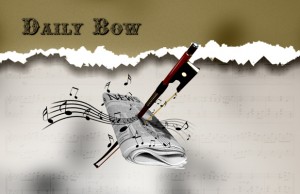Interesting Combination of Stravinsky, Mozart, and Adams Arrives in Seattle
A concert with an eye-catching program is always a good way to shake up your listening schedule. Normally a night at the symphony means a pleasant overture, a concerto, an intermission, and a monumental symphony to finish. If you’re in the Seattle area this weekend, however, the symphony has an offering that’s far from the ordinary. Guest conductor David Robertson will lead the Seattle Symphony in two works for piano and orchestra—Mozart’s Piano Concerto No. 20 in D minor paired with Stravinsky’s “Capriccio”—and the local premiere of John Adams’ “Doctor Atomic Symphony,” a new creation extracted from the composer’s 2005 opera of the same name.
While Adams’ symphony is new to Seattle, the work has undergone some serious revision since its original commission. Much more than just an arrangement of scenes from the opera in symphonic form, the new work extracts its musical content from an extremely dense layer of instrumental and vocal lines, creating, in effect, an entirely different work. The original result of that process was a 45-minute long symphony that Adams premiered at the BBC proms. Reviews, however, were unenthusiastic, which lead to the rewrite Seattle audiences will hear this weekend:
The final revision is, Robertson says, a “leaner, meaner” affair: “It takes all of the atmosphere, foreboding, excitement and concern that entering the atomic age was all about and distills it into pure music without vocals — which is really quite an achievement.”
In addition to the uniqueness of the Adams symphony, Robertson provided an explanation regarding his pairing of Mozart and Stravinsky, which will both feature pianist and Robertson’s wife Orli Shaham:
“I find that Mozart and Stravinsky complement each other very well,” Robertson says. He cites an affinity in their handling of solo instruments in orchestral settings, their sense of rhythm, harmony and tempo, and their gift for shaping melodies out of bits and pieces, all of which can “make for a surprising sense of continuity” when you play them together.
Programming like this is something I really hope to hear more of this year. As a regular member of the symphony orchestra audience, there’s nothing I love more than to hear the great overtures, concertos, and symphonies performed by seasoned professionals. But I also wish that the programs varied more. What Robertson has planned forces the listener to compare two works that normally wouldn’t appear in the same concert, providing a new perspective on both composers. Instead of going to a concert just to hear the same works in the same way again and again, a concert should challenge you to listen deeply. So here’s to a new year hopefully filled with new and innovative programming!















No comments yet.